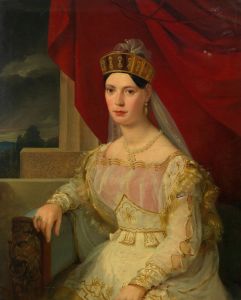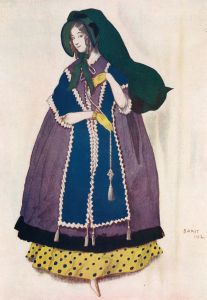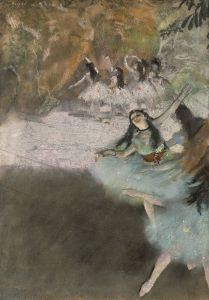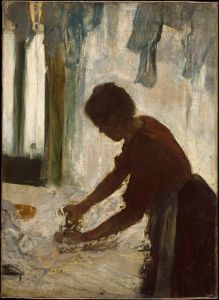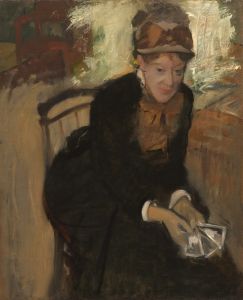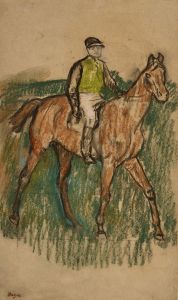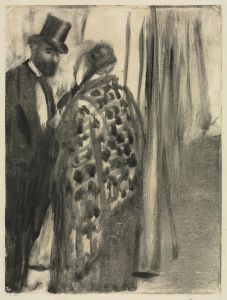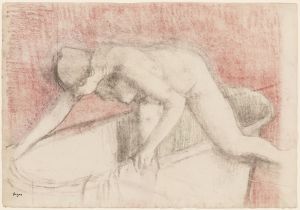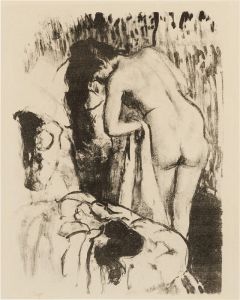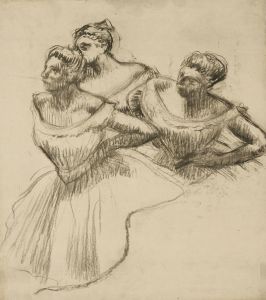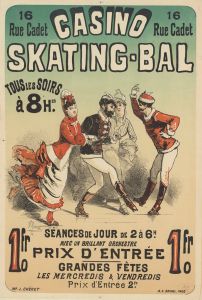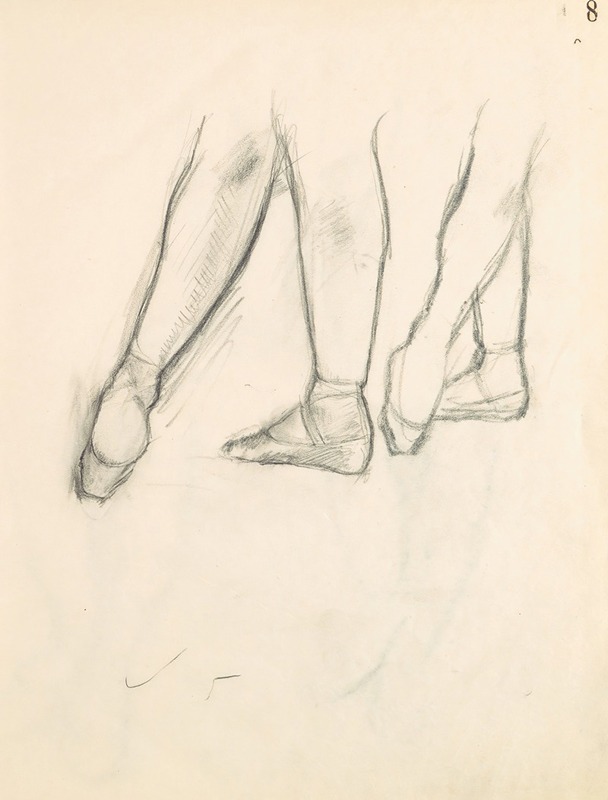
Figure Studies 9
A hand-painted replica of Edgar Degas’s masterpiece Figure Studies 9, meticulously crafted by professional artists to capture the true essence of the original. Each piece is created with museum-quality canvas and rare mineral pigments, carefully painted by experienced artists with delicate brushstrokes and rich, layered colors to perfectly recreate the texture of the original artwork. Unlike machine-printed reproductions, this hand-painted version brings the painting to life, infused with the artist’s emotions and skill in every stroke. Whether for personal collection or home decoration, it instantly elevates the artistic atmosphere of any space.
Edgar Degas, a prominent French artist known for his contributions to Impressionism, created a series of works that explored the human form with a keen eye for detail and movement. One of these works is "Figure Studies 9," which exemplifies his interest in capturing the nuances of the human body and its dynamic poses.
"Figure Studies 9" is part of Degas's extensive exploration of the human figure, a subject that fascinated him throughout his career. While Degas is often associated with his depictions of ballet dancers, his figure studies reveal his broader interest in anatomy and the human form. These studies were not intended for public exhibition but were rather exercises in understanding movement and form, serving as a foundation for his more finished works.
Degas's approach to figure studies was methodical and analytical. He often used live models to capture poses that conveyed a sense of spontaneity and naturalism. His studies were typically executed in a variety of media, including pencil, charcoal, and pastel, allowing him to experiment with line, shading, and texture. This versatility is evident in "Figure Studies 9," where Degas's mastery of draftsmanship is on full display.
The composition of "Figure Studies 9" reflects Degas's interest in unconventional viewpoints and cropping, a technique that he employed to create a sense of immediacy and intimacy. By focusing on specific parts of the body or capturing figures in mid-motion, Degas was able to convey a sense of life and vitality. This approach was influenced by his interest in photography and Japanese prints, both of which emphasized unusual perspectives and asymmetrical compositions.
Degas's figure studies also reveal his interest in the everyday and the mundane. Unlike many of his contemporaries who idealized the human form, Degas sought to depict it in its natural state, with all its imperfections and idiosyncrasies. This commitment to realism is evident in "Figure Studies 9," where the figures are rendered with a sense of authenticity and individuality.
Throughout his career, Degas's figure studies remained a crucial aspect of his artistic practice. They provided him with the opportunity to experiment and refine his techniques, ultimately informing his larger compositions. "Figure Studies 9" is a testament to Degas's dedication to understanding the human form and his ability to capture its essence with precision and sensitivity.
In summary, "Figure Studies 9" by Edgar Degas is a reflection of the artist's lifelong fascination with the human figure. Through his meticulous studies, Degas was able to explore the intricacies of movement and form, creating works that continue to resonate with audiences today. His innovative approach to composition and his commitment to realism set him apart as one of the leading figures of his time, and his figure studies remain an integral part of his artistic legacy.





